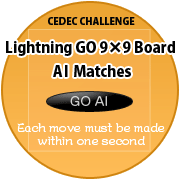Expected Skill | The intended audience includes Audio Directors, Sound Designers and Audio Programmers. |
|---|---|
Ideas Take Away | Attendees will learn about procedural audio (real-time sound synthesis) and audio features extraction (audio analysis) and see how they will influence the future of game sound design. Practical demonstrations of these technologies will be given. After this session, attendees should be able to start exploring them on their own. |
This presentation will describe some of the techniques that will shape the future of sound design for video games. Two very important technologies will be introduced in particular: Procedural Audio (real-time synthesis) and Audio Features Extraction (audio analysis).
Procedural Audio:
One of the main tasks of a sound designer working in the game industry is to transform static sounds into dynamic ones. Current solutions such as randomization, scripting and modular patching will be presented as well as their shortcomings (not dynamic enough, time-consuming etc...). Then procedural audio will be introduced. It will be shown that it has multiple advantages over these methods (truly dynamic, low memory footprint etc…) and examples of real-time synthesis of air, water, impacts and creature sounds will be demonstrated.
Audio Analysis:
By knowing more about the audio assets we are manipulating, we can offer adapted visualization modes and pertinent processing options to the sound designer. Audio analysis can therefore be used to create smarter and more intuitive sound tools. In addition, we will show how it can be used to improve audio engines by supporting dynamic mixing and audio shaders. Audio analysis is also useful to define new audio-related gameplay.
Combining them together:
Finally it will be demonstrated that by combining these two technologies in the future we can
build even better tools that allow sound artists to design sound effects in much more creative and productive ways. An example of a tool will be presented in which a sound designer can analyze existing samples and transform them into dynamic sound models. Examples of design of physics-related sounds (impacts and contacts) will be shown.
![]()
* The session contents are based on the information provided by the speakers.
-

Nicolas Fournel
Nicolas Fournel has 20 years of experience developing commercial digital audio software. He started his career programming sample editors in assembler on the Amiga and later founded Synoptic, a company that specialized in audio software synthesis on PC in the 90s. He then joined the game industry where he spent the last 11 years designing multi-platform audio engines and tools for companies such as Factor 5, Konami and EA in their central technology department.
Now a principal programmer at Sony Computer Entertainment Europe, his focus is on building innovative audio systems that empower sound designers while keeping technology invisible. His main interests include audio features extraction, procedural audio and high-level creative tools.


